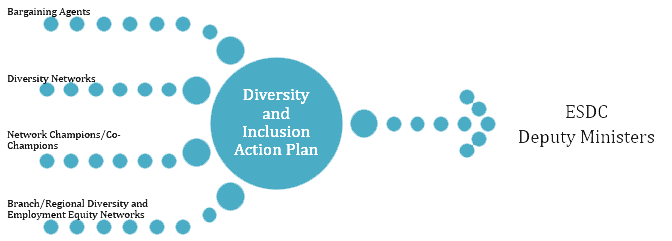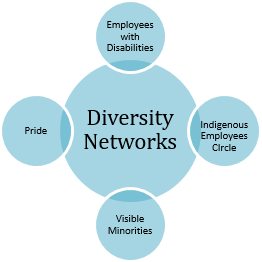2020-2024 Diversity and Inclusion Action Plan
ESDC's Diversity and Inclusion Action Plan (DIAP) extends beyond the requirements of the Employment Equity Act and recognizes the importance of diversity and inclusion in the workplace.
This action plan aims to support ESDC's Diversity and Inclusion agenda by adopting innovative ways of reaching diverse communities and by taking proactive approaches to measurably eliminating unconscious bias and barriers to recruitment, development and retention. It will also be done through meaningful engagement and dialogue across the organization, and by reinforcing accountability for inclusive practices.
Building on the progress, achievements and results of ESDC'S 2017-2020 Diversity and Employment Equity Action Plan (DEEAP), the 2020-2024 Diversity and Inclusion Action Plan (DIAP) sets new commitments to address remaining or new areas of focus and will position ESDC as a leader in diversity and inclusion.
Contents
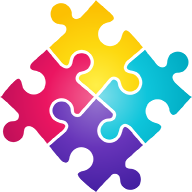
- Introduction
- Our Vision: Moving from Diversity to Inclusion
- Our Goal: Reduce or Eliminate Bias and Barriers
- Maintaining our Focus and Momentum
- Working Together
- Measuring Progress
- Working with our Employee Networks
- Employer Responsibilities and Legal Requirements
- Taking Action
- Conclusion
- Annex 1 – Diversity Target Outcomes
- Annex 2 – ESDC Workforce Analysis
- Annex 3 – Roles and Responsibilities to Support Diversity and Inclusion within ESDC
- Annex 4 – Definitions
- Annex 5 - Our Resources
Introduction
Introduction
Every day, Employment and Social Development Canada's (ESDC) employees do brilliant work to develop and deliver policies and services that affect the lives of people across the country and beyond. To do this effectively and fairly, the department must represent modern Canada in all its diversity. Evidence shows that diversity – of background and of life experience – brings different insights, creates challenges and encourages change and innovation. This in turn produces more accountable and trusted public services and more effective decisions –more effective because they are more attuned to the needs and interests of all our communities.

For the benefits of diversity to be felt, we must create an environment where differences of thought and outlook are not only respected, but also expected. We want all employees to feel that they can bring their true selves to work, that they are valued for the distinct perspective that they bring and able to go as far as their talents will take them – irrespective of their sex, gender identity, ethnicity, the colour of their skin, sexual orientation, disability, faith, age, socio-economic background or lived experience. Feeling included is not only good for us as individuals, it's good for teams and it's good for the people and communities we serve.
Our vision: Moving from Diversity to Inclusion
As an organization, we want to move beyond diversity and focus on inclusion because diversity without inclusion does not allow us to capitalize on the uniqueness of each of our employees. If we create a system where all voices are invited to contribute, by sharing their own ideas and discussing the ideas of others, where all people feel included and welcomed, we then create an environment where all employees will join a place of positivity and appreciation.
Organizational inclusion fosters an environment where all employee experiences are taken into account. It also provides an authentic approach to organizational culture change by fearlessly examining its systemic barriers to inclusion. It takes into account intersectionality, conscious and unconscious biases, micro-aggressions, and earned and unearned privileges.
ESDC's Diversity and Inclusion Action Plan (DIAP) extends beyond the requirements of the Employment Equity Act and recognizes the importance of diversity and inclusion in the workplace. By maintaining an inclusive workplace where people are treated with respect, dignity and fairness, ESDC is upholding the highest standards for its employees – where inclusion and respect for all people are recognized not only as a public service value but as a core feature of the Department's culture, practiced and reflected upon on a daily basis. True organizational inclusion is not about compliance; it is about embedding inclusionary practices within the culture of the organization.
Our Goal: Reduce or Eliminate Bias and Barriers
This action plan aims to support ESDC's Diversity and Inclusion agenda by adopting innovative ways of reaching diverse communities and by taking proactive approaches to measurably eliminating unconscious bias and barriers to recruitment, development and retention. It will also be done through meaningful engagement and dialogue across the organization, and by reinforcing accountability for inclusive practices. When a department is clear on its objectives, and diligent about mitigating bias in their talent and HR practices, the results are a very different picture of what represents success.
Maintaining our Focus and Momentum
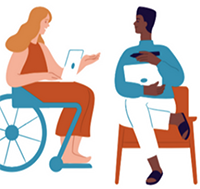
Building on the progress, achievements and results of ESDC'S 2017-2020 Diversity and Employment Equity Action Plan (DEEAP), the 2020-2024 Diversity and Inclusion Action Plan (DIAP) sets new commitments to address remaining or new areas of focus and will position ESDC as a leader in diversity and inclusion. The Key Activities in Annex 1 will be reviewed and adapted either on an annual or bi-annual basis, to address emerging issues and/or changing legislative requirements.
Working Together
ESDC's 2020-2024 DIAP was developed in consultation with key stakeholders, including Bargaining Agent Representatives from the Human Resources Union-Management Consultation Committee (HRUMCC), Diversity Networks, the Diversity and the Indigenous Perspectives Champions/Co-Champions and Branch/Regional Diversity and Employment Equity Networks.
While the ultimate accountability for the implementation of the 2020-2024 DIAP rests with the Deputy Minister with the support of ESDC's senior management team, there is a role for everyone in achieving our objectives (refer to Annex 3).
Measuring Progress

We will monitor ESDC's DIAP on a number of activities (refer to Annex 2). These will measure whether we are making satisfactory progress in support of DIAP commitments and expected outcomes.
In accordance with Employment Equity Act requirements, ESDC's workforce representation of designated groups is reviewed on a quarterly basis in all Occupational Categories and Occupational Groups. This helps ensure it reflects or exceeds workforce availability rates derived from 2016 Census results. ESDC publishes Workforce Demographic Profiles (WDP) at the department, portfolio, branch/region and directorate levels to highlight this information for both management and employees and to inform workforce planning and recruitment strategies. In addition, EE group recruitment rates, EE group promotion rates, and EE group departure rates are monitored and reported in the WDP on an annual basis.
Every quarter we share EE representation rates and demographic trends with Assistant Deputy Ministers, Diversity Networks, the Diversity and the Indigenous Perspectives Champions/Co-Champions, and Branch/Regional Diversity and Employment Equity Networks. This helps inform EE recruitment and development strategies at the national and regional levels.
In addition we prepare bi-annual reports with quantitative and qualitative analysis at the departmental level. This helps us track our progress towards achieving DIAP commitments and expected outcomes. These are subsequently presented to the Portfolio Management Board. We expect all branches/regions to provide input for the year-end report related to the activities they have undertaken within their respective organizations in support of DIAP commitments. The information collected from branches/regions will assist the Human Resources Services Branch in identifying new or emerging gaps and in developing strategies to address them.
We also prepare a triennial close-out report. In addition, we share bi-annual updates regarding both the implementation of the DIAP and EE program monitoring with bargaining agents via the HRUMCC forum. The DIAP should be considered an evergreen document. Key commitments and activities will be reviewed and modified as required on a bi-annual basis.
Working with our Diversity Networks
Our four employee diversity networks (Pride Network, Employees with Disabilities Network, Indigenous Employees Circle and the Visible Minorities Employee Network) are an invaluable source of insight into the employee experience within the department. They play an enormously important role in providing a safe space for airing concerns and representing the views and interests of their members.
We embrace the opportunity to support our diversity networks and help to build their capacity and capability so that they are able to offer the level of policy and implementation support that is needed by the Department. Our goal is to build a greater voice for staff across the country and we know that all diversity networks are keen to play a part in improving diversity and inclusion. We will work with diversity networks to strengthen their role as a key part of the accountability and transparency approach we intend to maintain and improve upon.

Employer Responsibilities and Legal Requirements
Employer Responsibilities and Legal Requirements
ESDC's 2020-2024 DIAP responds to the requirements of the Employment Equity Act and the Canadian Human Rights Act (CHRA) to ensure that the principles of equal opportunity are reflected in ESDC's employment practices and that ESDC's policies and practices protect employees from discrimination.
Employment Equity Act
The Employment Equity Act calls for the implementation of positive measures, including policies and practices that go beyond removing barriers, to actively promote a public service that is more representative of Canada's diverse population. Overall, the Act is intended to identify and eliminate barriers to employment for persons in the four EE designated groups (women, Aboriginal peoples, persons with disabilities and members of visible minorities) in order to achieve equality in the workplace and to ensure that no person is denied employment opportunities or benefits for reasons unrelated to ability.
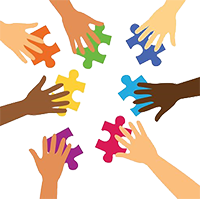
Under the Act, all federal employers are required to analyze their workforce data; review employment systems, policies and practices to identify and eliminate barriers; develop policies and programs to correct under-representation; provide accommodation; strive to achieve qualitative and quantitative goals; and inform employees of the purpose of EE, the measures undertaken or planned to be implemented, and the progress achieved.
Even though the LGBTQ2+ group is not specifically included in the Employment Equity Act, ESDC has taken the initiative to go beyond the Act and create a fifth diversity group that will be treated in the same manners as the existing four employment equity designated groups. As such, we have put in place positive measures to support them, such as the creation of the PRIDE employee network, the inclusion of the LGBTQ2+ group in the next self-identification campaign, as well as the creation of a Transition Guide for Employees, their Co-Workers and Managers.
Canadian Human Rights Act
The Canadian Human Rights Act (CHRA) has the express purpose to protect individuals from discrimination based on these prohibited grounds: race, national or ethnic origin, colour, religion, age, sex, sexual orientation, gender identity or expression, marital status, family status, genetic characteristics, disability, or conviction for which a pardon has been granted.
Taking Action
Taking Action

ESDC strives to have a workplace that fosters diversity and inclusion, in which the diversity of people and ideas are supported by a work environment where employees are able to be their authentic selves and where different approaches are sought out and valued to advance the achievement of departmental business objectives.
ESDC's 2020-2024 DIAP serves as the forward agenda towards advancing measurable change reflected in the 2020/2021 Deputy Minister Commitments on Diversity and Inclusion to:
- Establish a culture of inclusiveness that values diversity and will combat racism and address systemic barriers;
- Increase the representation of Black, other racialized and Indigenous People as well as persons with disabilities within all levels of the organization; and
- Ensure that internal and external policies and programs are inclusive and free of systemic racism and barriers.
The DIAP's commitments (Annex 1) are organized along three key pillars, with activities focused both on legislated obligations and key initiatives to position ESDC as a diversity and inclusion leader.
Pillar One — Supporting a Transformed Inclusive Organization
Key Initiatives:
- Put in place tools, such as surveys, that will allow us to better understand each employee's lived experiences and sense of belonging;
- Understand where we are and where we want to go in terms of inclusiveness and make sure everybody is on board;
- Encourage training and awareness, including duty to accommodate, to support a culture of inclusiveness;
- Establish Diversity Employee Network Chair roles on full-time basis;
- Formalize a Black Employee network and Champion;
- Improve representation and pride in diversity of ESDC workforce ; and
- Regular messaging from ESDC Diversity Champions/Co-Champions and PMB members to establish a culture of inclusiveness that values diversity, combats racism and acknowledges and addresses systemic barriers.
Pillar Two — Eliminating barriers
Key Initiatives:
- Continue to support logistically and financially the four existing employee networks and establish a fifth group for the representation of women;
- Continue to support the National Steering Committee, the Unconscious Bias Working Group and the Building Bridges Working Group to share best practices and enable ongoing dialogue on diversity/EE initiatives and accessibility;
- Establish a quarterly Diversity Perspectives meeting between the chairs, co-chairs and Deputy Ministers to exchange on ideas and best practices;
- Create safe spaces for people to share authentically;
- Continue to implement activities to support a healthy, supportive, inclusive, harassment-free workplace;
- Adopt proactive approaches to identify and eliminate systemic barriers to the recruitment, promotion and inclusion of Black, other racialized, Indigenous People, LGBTQ2+, as well as persons with disabilities;
- Review Management Accountability Framework results annually for diversity and EE to identify areas of improvement;
- Review and analyze Public Service Employee Survey results as they become available to identify and address any emerging issues from the perspective of designated group respondents.
- Review Public Service Accessibility Strategy (PSAS) results and survey to identify areas of improvement;
- Increase physical and technological accessibility for persons with disabilities and enable the ESDC Accessibility Roadmap in support of the new Accessibility Act;
- Continue the development and implementation of the annual Diversity and EE communications plan aimed at increasing awareness and fostering inclusion within the Department;
- Continue to promote the mandatory online diversity training for managers/employees as well as various non-mandatory trainings and workshops; and
- Recognize managers/employees who support and promote diversity.
Pillar Three — Improving Recruitment, Retention and Advancement
Key Initiatives:
- Organize targeted recruitment events and develop strategies to ensure that the ESDC workforce is not only representative of the Canadian public it serves, but also that it is aligned with projections of the diversity of the Canadian population for the future;
- Participate in interdepartmental strategies and implement concrete actions to improve accessibility in the workplace;
- Formalize and monitor retention, recruitment, promotion and departure rates of EE group members to ensure that these rates are proportionate to non-EE employees and identify and implement strategies to address gaps;
- Develop a departmental strategy to reduce conscious and unconscious bias in selection and Talent Management processes based on the recommendations from the Unconscious Bias Working Group;
- Integrate key themes identified by quarterly Deputy Ministers Diversity meetings.
Conclusion
We have positioned ourselves to be a model on diversity and inclusion in the public service. We believe that the strong leadership demonstrated by ESDC's senior management will enable us to continue down this path. Starting now and over the long-term, recognizing the extent of the transformation we want to achieve and ensuring the impact of our actions are sustainable.
We are cognizant that that everyone will need to work collaboratively and the role that staff themselves play is critical. A strategy is not enough – the ownership and leadership of all of us in its delivery is the only way we will realise our objectives.
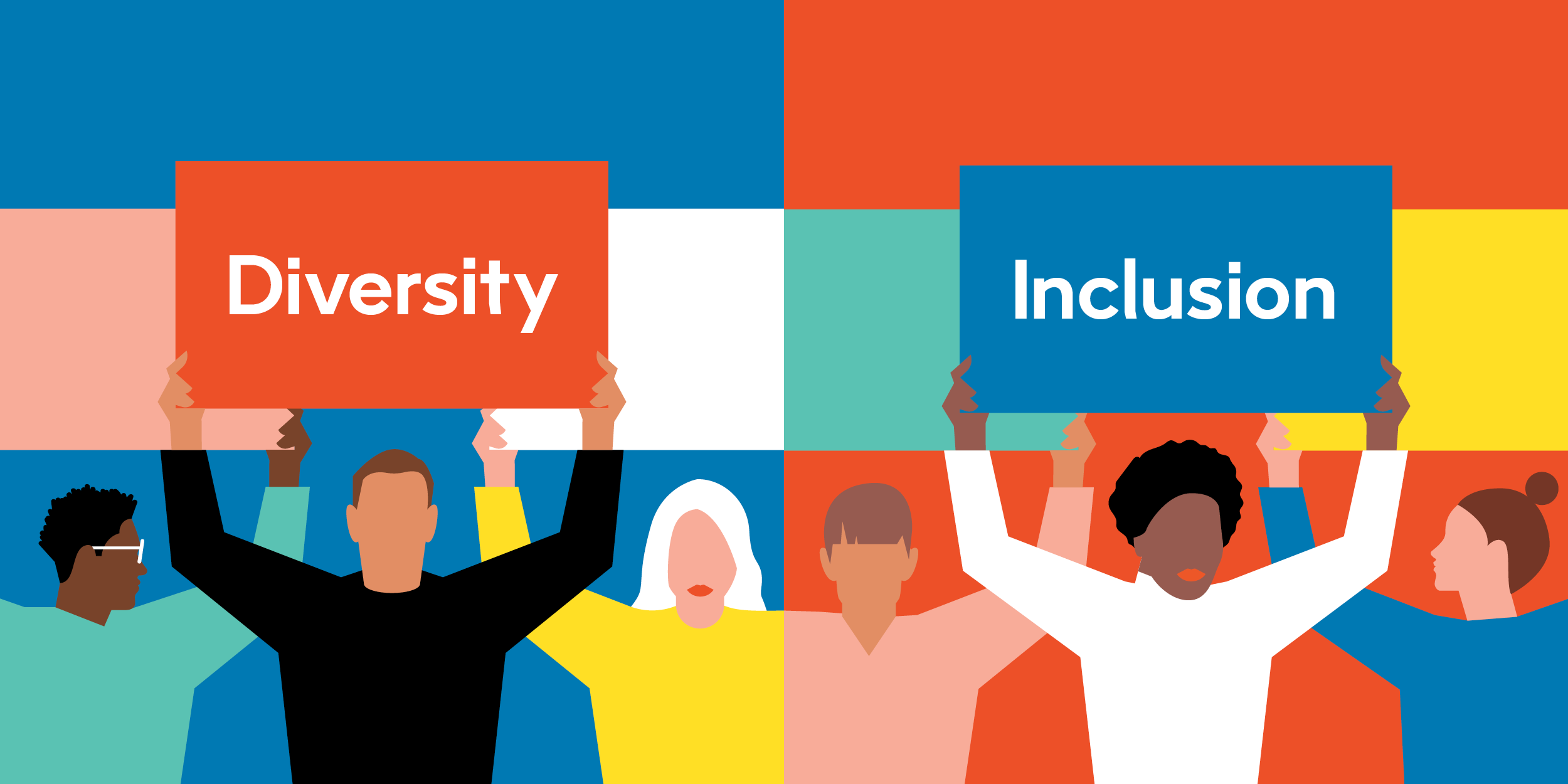
Annex 1 – Diversity Targeted Outcomes
Annex 1 – Diversity Targeted Outcomes
Pillar 1 - A culture of inclusiveness that values diversity and will combat racism and address systemic barriers
Key Activities Timelines Performance Indicators Launch a new Diversity and Inclusion essential training, Richness of Diversity and Inclusion (RDI). Spring 2021 Completion rates of new RDI training. Create safe spaces for ESDC's diverse workforce to share real-life experiences, without fears of repercussion. This information will be used to strengthen the departments' diversity and inclusion training and implement inclusion initiatives. Ongoing Safe spaces available for all diversity groups and equity seeking groups. Number of lived experiences shared in communications and increased number events to raise awareness around BIPOC and other equity seeking groups. Create an ESDC Women's Diversity Network. Fall 2021 ESDC Women's Diversity Networks launched. Conduct a deep dive inclusion survey to identify systemic discriminatory practices that prevent full inclusion and associated supports needed to achieve a transformed inclusive organizational culture. Fall 2021 Systemic discriminatory practices are identified and evidence of a healthy, inclusive and accommodating workplace is shown in future survey results and demographic data. Leadership training on anti-racism for ESDC executives. Fall 2022 Leadership training on anti-racism has been delivered to all executives by end of 2022. Pillar 2 - Internal and external policies and programs that are inclusive and free of systemic racism and barriers
Key Activities Timelines Performance Indicators Continue to support logistically and financially the four existing diversity networks and establish a fifth group for the representation of women. Summer 2021 Full-Time Chair positions and Administrative Assistant positions are created and funded. Continue to support the National Diversity Steering Committee, the Unconscious Bias working group and the Building Bridges working group to share best practices and enable ongoing dialogue on diversity/EE initiatives and accessibility. Ongoing Panels are set up to hear how existing programs and policies are being experienced by equity-seeking groups and what they think needs to be addressed, and action plans established. Review the recommendations of ESDC's Unconscious Bias Working Group to implement concrete measures to address systemic barriers. Fall 2021 Number of recommendations implemented. Establish a quarterly Diversity Perspectives governance between the chairs, co-chairs and Deputy Ministers to exchange on ideas and best practices. Spring 2021 Number of meetings held for each network with Deputy Ministers and Champions. Continue to implement activities to support a healthy, supportive, inclusive, harassment-free workplace. Ongoing Evidence of fewer harassment complaints and grievances Adopt proactive approaches to identify and eliminate systemic barriers to the recruitment, promotion and inclusion of Black, other racialized, Indigenous People, LGBTQ2+, as well as persons with disabilities. Ongoing Ensuring BIPOC and other equity seeking groups have membership and their view represented at executive tables, advisory councils, and other horizontal committees to foster diverse perspectives and needed adjustments on internal policies, programs and operations. Establish an Employment System Review at the departmental level; Fall 2021 Launch of the statement of work and reference for proposal. Review Management Accountability Framework results annually for diversity and EE to identify areas of improvement. Summer 2021 Improved MAF results related to diversity and EE. Review the 2019 Public Service Employee Survey results (from the perspective of designated groups). Summer 2021 Areas requiring attention are identified and action plans put in place. Pillar 3 - Increased representation of Black, other racialized and Indigenous People (BIPOC) as well as persons with disabilities within all levels of the organization
Recruitment
ESDC will focus its recruitment, retention, advancement and inclusion measures based on the metrics provided in Annex 2. These measures will focus on the changing demographics during the four-year DIAP and the department will engage and collaborate with its key stakeholders, diversity networks and bargaining agents, to address areas of focus. These measures will also incorporate Deputy Minister Core Commitments related to recruitment, retention and career advancement:
Approaches
- Building upon the departments' use of regional and national targeted diversity group recruitment events and inventories.
- Where applicable, maximizing the use of restricting areas of selection to employment equity groups, rely on organizational needs to target subgroups of disadvantaged groups to address workforce requirements for diversity and inclusion or as a special program to address disadvantage.
- Expanding use of different social media platforms to recruit from a larger talent pool.
- Partnering with equity-seeking communities to attract and retain new talent that reflects Canada's diversity
- Maximizing virtual work opportunities, where possible, to reach a larger pool of talent, in all regions of the country.
- Reviewing and ensuring that hiring processes are culturally sensitive and driven to remove barriers to appointment for BIPOC and persons with disabilities.
Timelines
Ongoing – Targets to be established annually
Performance Indicators
- Increased representation of BIPOC and persons with disabilities within all levels of the organization.
- Increased hiring rates of BIPOC and persons with disabilities.
- Increased promotion rate of BIPOC and employees with disabilities in all occupational groups.
- Number of targeted recruitment processes.
- Number of targeted hiring events.
- Number of executives and EX feeder group members with ADM or DM-level sponsors identified.
- Number of language training opportunities provided for career development of BIPOC and employees with disabilities.
- Number of BIPOC and employees with disabilities within the organization participating in mentoring programs.
Retention / Advancement
ESDC will actively support the promotion, sponsorship and career development of Black people and other racialized groups, Indigenous People, and persons with disabilities by:
Approaches
- Implementing departmental sponsorship initiatives; and
- Conducting a thorough analysis of its hiring, promotion and retention rates of equity-seeking groups, in collaboration with diversity networks, to identify where specific interventions may be required to address and remove systemic barriers, both from a recruitment, retention, and career progression perspective.
- Reviewing and ensuring that talent and performance management processes are culturally sensitive and driven to remove systemic barriers to BIPOC and employees with disabilities.
- Using non-imperative staffing for managerial positions where BIPOC and persons with disabilities are being considered for appointment.
- Formalize and monitor retention, recruitment, promotion and departure rates of EE group members to ensure that these rates are proportionate to non-EE employees and identify and implement strategies to address gaps
Timelines
Ongoing – Targets to be established annually
Performance Indicators
- Increased representation of BIPOC and persons with disabilities within all levels of the organization.
- Increased hiring rates of BIPOC and persons with disabilities.
- Increased promotion rate of BIPOC and employees with disabilities in all occupational groups.
- Number of targeted recruitment processes.
- Number of targeted hiring events.
- Number of executives and EX feeder group members with ADM or DM-level sponsors identified.
- Number of language training opportunities provided for career development of BIPOC and employees with disabilities.
- Number of BIPOC and employees with disabilities within the organization participating in mentoring programs.
Annex 2 – ESDC Workforce Analysis
The following table presents a breakdown of gaps in representation at the departmental level by Occupational Category and Occupational Group as of April 1, 2021 and is the baseline which progress will be measured. As disaggregated data regarding sub-groups becomes available these will also be considered in terms of targeted approaches to be implemented. Gaps and promotion objectives will be reviewed and addressed on a bi-annual basis aligned with evolving disaggregated data and evidence base, etc.
Departmental Under-representation by Occupational Category and Group as at April 1, 2021 (Departmental in-scope population = 27,166/workforce availability based on Census 2016 results and the 2017 Canadian Survey on Disability)
Occupational Category Departmental Population Women Visible Minorities Aboriginal People People with Disabilities Executive (EX) 572 11 7 -5 7 Scientific and Professional (EC) 2092 -64 133 -7 -7 Scientific and Professional (ED) 12 2 -2 0 0 Scientific and Professional (MD) 12 2 -4 0 0 Scientific and Professional (NU) 618 121 -78 1 -25 Administrative and Foreign Services (AS) 2,686 145 115 6 -128 Administrative and Foreign Services (CS) 1,891 74 31 20 -69 Administrative and Foreign Services (FI) 511 35 35 5 -42 Administrative and Foreign Services (IS) 288 18 4 -2 -15 Administrative and Foreign Services (OM) 6 2 * * * Administrative and Foreign Services (PE) 387 46 27 3 -16 Administrative and Foreign Services (PG) 59 3 0 -1 -4 Administrative and Foreign Services (PM) 19,511 1,598 833 135 -789 Technical (EG) 4 -1 * * * Technical (GT) 20 0 3 1 1 Technical (TI) 225 37 29 4 2 Administrative Support (CR) 2,319 -214 221 -8 -42 Total : 31,213 1,816 1,355 152 -1,126 - Women:
-
The key area to address representation needs for women remains in the EC group (-64) and reflects an increase since the last quarter (-78).
- Of note, we continue to leverage the EC-02 continuous inventory and plan to do more targeted recruitment.
- Visible Minorities:
-
The key area to address representation needs for visible minorities remains in the NU group (-78) and reflects a slight deceased need since the last quarter from -75.
- Although ESDC launched targeted recruitment processes to address this requirement and there was a notable reduction in the numbers, the need persists.
- ESDC is planning to launch a targeted recruitment process to address this requirement, with the assistance of the Visible Minorities network (VMN).
- The aim is also to develop strategies to increase visible minority recruitment, retention and advancement in all occupational groups, to address the 8.2% that are eligible to retire from this group by 2023.
- Indigenous Peoples:
-
Overall, the Department has an Aboriginal Peoples representation above the rate of their workforce availability (4.1% and 3.6%, respectively).
- The percentage of new hires for indigenous people has decreased to 3.6% from 3.8% in the last quarter.
- The EX-01 Indigenous process is now complete and a pool has been established with approximately 30 candidates.
- Persons with Disabilities:
-
WFA of persons with disabilities more than doubled to 9.6% in the 2016 Census cycle from 4.1% in the previous 2011 Census cycle, due to the expanded definition of persons with a disability, as captured by the Canadian Survey on Disability done in 2017:
- The most significantly underrepresented group is in the PM category.
- The percentage of new hires for persons with disabilities has stayed the same from the last quarter at 4.7%.
Annex 3 – Roles And Responsibilities to Support Diversity and Inclusion Within ESDC
The Deputy Ministers demonstrate commitment and exercise leadership toward ensuring that every level of management is held accountable for translating the commitments and activities of the DIAP into action to ensure that strategic outcomes of the DIAP are achieved.
The Champions and Co-Champions promote diversity and inclusiveness within ESDC through regular dialogue sessions with employees, participation at special events to celebrate diversity, and by working closely with senior leaders across the organization to promote awareness of diversity and a culture of inclusion within ESDC.
Executives (including Assistant Deputy Ministers, Directors General and Directors) ensure that their respective regions, branches, and directorates are committed to achieving the outcomes of the DIAP by providing visible leadership and support to achieving a diverse and inclusive workforce and improving their organization's diversity and inclusion objectives, and by adapting their organization's workforce plans and strategies to reflect the content of the DIAP.
Managers and Supervisors take actions to support a representative workforce and ensure that ESDC has a bias and barrier-free workplace. They also implement activities as outlined in the DIAP, promote the benefits of diversity and inclusion in the workplace, and can provide time, pending operational requirements, needed to plan, coordinate and participate in activities organized by diversity networks.
Employees contribute to a bias and barrier-free workplace and take initiative to embrace the DIAP activities. They play an active role in supporting diversity and inclusion activities and initiatives, and for bringing challenges and recommendations to the attention of their senior leaders, supervisors, managers, diversity networks and/or Champions, as appropriate.
Human Resources Services Branch (HRSB) manages the Diversity and EE Program (including the development and implementation of the DIAP). HRSB monitors progress against the achievement of DIAP commitments and expected outcomes, provides regular updates to senior management and bargaining agents, identifies emerging issues requiring management attention, and presents recommendations for improvement, when necessary. HRSB produces, every quarter, statistical reports with demographics to provide managers with the statistical workforce information they need to make evidence-based decisions that will assist with development of workforce and recruitment strategies. HRSB also supports the activities of the Diversity and Inclusion Champions and Co-Champions, and provides support to employee networks in relation to communication requests, funding requests and other related activities conducted in support of the achievement of DIAP commitments.
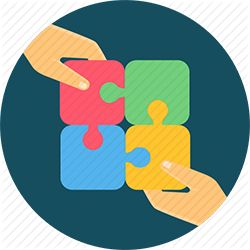
Diversity Networks are a key component to improve Diversity and Inclusion within the Department. They provide a safe forum for employees and their allies to connect and discuss issues related to the promotion of a healthy and inclusive work environment. The Diversity Network Chairs are responsible for engaging their membership, overseeing the organization of events to celebrate diversity, advocating the interests of their members and bringing forward any specific challenges and providing advice to HRSB and/or Champions. In addition, they assist in identifying and implementing best practices within their branches/regions and share this information on a national basis.
Bargaining Agents collaborate and provide input in the development and implementation of the DIAP and communicate relevant diversity and EE-related information to their members. They are also responsible for representing their members on issues that are brought to their attention with regard to the management of diversity and inclusion within the Department.
Annex 4 – Definitions
- Designated Groups
- Women, Aboriginal peoples, persons with disabilities and members of visible minorities.
- Aboriginal/Indigenous
- Persons who are Inuit, Métis, or First Nations.
- Members of Visible Minorities
- Persons, other than Aboriginal peoples, who are non-Caucasian in race or non-white in colour.
- Persons with Disabilities
- A physical, mental, intellectual, learning, communication or sensory impairment—or a functional limitation—whether permanent, temporary or episodic in nature, that, in interaction with a barrier, hinders a person's full and equal participation in society.
- LGBTQ2+ stands for:
-
Lesbian (a woman who is attracted to women.)
Gay (person who is attracted to people of the same gender.)
Bisexual (somebody who is attracted to people of their own gender as well as other genders, which can include non-binary people.)
Transgender (person whose gender identity differs from their sex assigned at birth.)
Queer (historically a derogatory term used as a slur against LGBTQ2 people, this term has been reclaimed by many LGBTQ2 people as a positive way to describe themselves, and as a way to include the many diverse identities not covered by the common LGBTQ2 acronym.)
2-Spirit (Two-Spirit, an English term used to broadly capture concepts traditional to many Indigenous cultures. It is a culturally-specific identity used by some Indigenous people to indicate a person whose gender identity, spiritual identity and/or sexual orientation comprises both male and female spirits.)
+ (The + sign to represent all of the other identities that you may have already heard of: Non-binary, pansexual, asexual and intersex) We use the plus sign because there's so many identities out there, and the community and the language is always evolving and we want to be inclusive. It is very important to be inclusive, understanding and patient when it comes to the diverse forms of identity that currently exist in our day to day life.
- Representation Gap
- The difference between the designated group's representation in the departmental workforce (workforce representation) and the respective workforce availability.
- Workforce Availability (sometimes termed labour market availability)
- The distribution of people in the employment equity designated groups as a percentage of the total Canadian workforce. For federal public service purposes, workforce availability is based on Canadian citizens in those occupations in the Canadian workforce corresponding to the occupations in the public service and is derived from census statistics collected by Statistics Canada. Estimates for persons with disabilities are derived from data, also collected by Statistics Canada, in the Canadian Survey on Disability (CSD).
- Workforce Representation
- The representation of designated group members within the departmental workforce.
Annex 5 - Our Resources
Annex 5 - Our Resources
iService Page
ESDC Diversity Learning Opportunities
Unconscious Bias Training
- Concept of Unconscious Bias (W005)
- Awareness of biases (W006)
- Strategies (W007)
- The Richness of Diversity and Inclusion
- Indigenous Awareness Learning
- Unpacking Unconscious Bias virtual course (W095)
- Introduction to Gender-based Analysis Plus (GBA+) (B001)
- Elder Talk: Exploring Identity
ESDC Accessible Documents
Diversity and Inclusion Team
